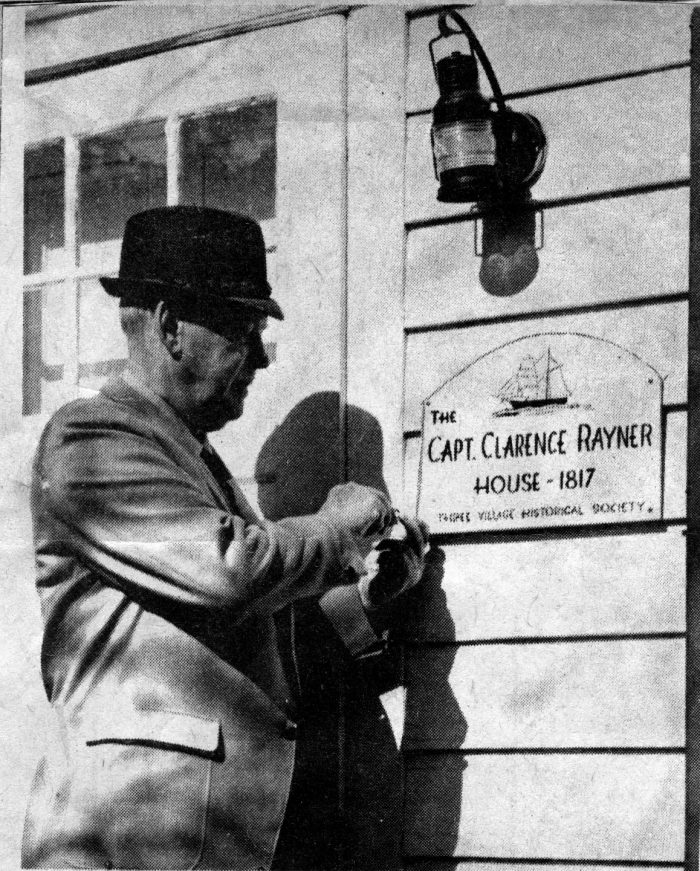Thursday March 28
Billy Joel’s New York
Comsewogue Public Library, 170 Terryville Road, Port Jefferson Station invites the community to a presentation titled Billy Joel’s New York from 7 to 8:15 p.m. Take a multimedia stroll through Long Island and NYC, as you learn about landmarks of The Piano Man’s career with Clive Young. Open to all. Call 631-928-1212 or visit www.cplib.org to register.
Vanderbilt Lecture
Rescheduled from March 7. Suffolk County Vanderbilt Planetarium, 180 Little Neck Road, Centerport continues its lecture series with Mapping Historical New York: A Digital Atlas at 7 p.m. Historians Gergely Baics and Rebecca Kobrin will discuss Manhattan’s and Brooklyn’s transformations during the late nineteenth and early-twentieth centuries. Drawing on 1850, 1880, and 1910 census data, the Digital Atlas shows how migration, residential, and occupational patterns shaped the city. $10 per person. To register, visit www.vanderbiltmuseum.org.
Native American Drumming
All Souls Church Parish House, 10 Mill Pond Road, Stony Brook hosts an evening of Native American Drumming Meditation from 7 to 8:45 p.m. Led by elder drummer, Ric Statler, drumming meditation seeks to integrate the physical, mental, emotional, and spiritual parts of the human self, creating a state of well-being. Call 631-655-7798 for more information.
Sound Bath Meditation
North Shore Public Library, 250 Route 25A, Shoreham hosts a program titled Sound Bath Meditation at 7 p.m. Join Susan Ferro for this transformative, deep healing Sound Bath session with Tibetan Bowls, Crystal Bowls, Gongs, Chimes and Drums! Sound and music to calm the mind and body. Open to all. To register, call 631-929-4488.
An Evening of Comedy
Join the Cinema Arts Centre, 423 Park Ave., Huntington for an evening of Stand Up/Sit Down comedy with Chris Monty at 8 p.m. In his stand-up, Chris channels the style of the 1960’s cool funnyman mixed with a modern chic. After his set he’ll share stories about his comedy career and many acting roles with host Steven Taub. Tickets are $40, $30 members at www.cinemaartscentre.org.
Friday March 29
Fish Fry Friday – just added!
Bethel AME Church, 33 Christian Ave., Setauket hosts a Fish Fry Friday from 4 to 7 p.m. $20 per plated includes choice of fried whiting or catfish or baked whiting, mashed potatoes, cole slaw, string beans and dessert. Dine in or take out. Call 631-751-4140 for more information.
An Evening with Bob Nelson
Theatre Three, 412 Main St., Port Jefferson welcomes back Bob Nelson for a night of laughs on the Mainstage starting at 8 p.m. Watching a Bob Nelson live performance is like watching several different types of top comedians all rolled up into one. Characters like the lovable nerd Eppy Epperman, punchy boxer Jiffy Jeff and chicken rancher Wilby Stuckinson are as funny and memorable as any you will see in comedy today. Tickets are $49. To order, call 631-928-9100 or visit www.theatrethree.com.
Friday Night Face Off
Friday Night Face Off, Long Island’s longest running Improv Comedy Show, returns to Theatre Three’s Second Stage, 412 Main St., Port Jefferson tonight at 10:30 p.m. Using audience suggestions, FNFO pits two teams of improvisers against each other in an all-out championship! Recommended for ages 16 and up, due to adult content. Tickets are $15 at the door – cash only. 631-928-9100
Saturday March 30
Easter Festival
Join the Smithtown Historical Society, 239 E. Main St., Smithtown for an Easter Festival from 11 a.m. to 2 p.m. Activities include a craft corner, petting zoo, craft and food vendors, scavenger hunt and a visit with the Easter Bunny. Tickets are $7 per person at eventbrite.com or at the gate. Rain date is March 31. Call 631-265-6768 for more information.
Easter Celebration at The Shoppes
The Shoppes at East Wind, 5768 Route 25A, Wading River will host an Easter Celebration at The Shoppes with the Easter Bunny from 11 a.m. to 5 p.m. Ride the Carousel ($), Bounce House ($), take your own free photo with the Easter Bunny (no appointment needed) and shop for last minute Easter gifts. 631-929-3500
Long Island Comedy Festival
The Long Island Comedy Festival returns to Theatre Three, 412 Main St., Port Jefferson at 8 p.m. Comedian line-up includes David Weiss, Scott Schendlinger, John Ziegler, and Eric Haft with a surprise guest. Tickets are $49. To order, call 631-928-9100 or visit www.theatrethree.com.
Sunday March 31
Port Jefferson Easter Parade
The Greater Port Jefferson Chamber of Commerce hosts the annual Easter Parade in the Village of Port Jefferson at noon. Enjoy an old-fashioned “Easter Bonnet” walking parade from Theatre Three to the Port Jefferson Village Center (all are welcome to wear their Easter best and march) followed by an Easter Egg Hunt on Harborfront Park’s Great Lawn at 12:15 p.m. for children ages 2 to 8. Call 473-1414 for more info.
Monday April 1
Movie Trivia Night
Join the Cinema Arts Centre, 423 Park Ave., Huntington for a Movie Trivia Night at 8 p.m. Try to answer 50 questions based all around film, actors and actresses, awards, and everything else associated with the world of film. Challenge like-minded film fans in a battle of wits for cash and other prizes. You can form teams, so bring some friends and work together. Feel free to come alone and play solo as well! Hosted by Dan French. Tickets are $11 per person, $7 members at www.cinemaartscentre.org.
James Taylor Tribute Concert
The John W. Engeman Theater, 250 Main St., Northport continues its Special Events series with a James Taylor tribute concert How Sweet It Is! with Steve Leslie tonight and April 2 at 8 p.m. Audiences will be singing along to such classics as “Carolina In My Mind,” “You’ve Got a Friend,” “Fire and Rain,” and more. Tickets are $45. To order, call 631-261-2900 or visit www.engemantheater.com.
Tuesday April 2
James Taylor Tribute Concert
See April 1 listing.
MLK Jr. Community Reading
Bethel AME Church, 33 Christian Ave., Setauket will host a live community reading of Dr. Martin Luther King, Jr.’s 1967 speech Beyond Vietnam — A Time to Break Silence from 7 to 9 p.m. All are welcome to attend. The event is sponsored by the North Country Peace Group, South Country Peace Group, Pax Christi Long Island, LI Alliance for Peaceful Alternatives, Building Bridges Brookhaven, Multicultural Solidarity Long Island, and Veterans for Peace LI Chapter 138. To volunteer as a reader, email [email protected].
Wednesday April 3
An Afternoon of Art
Spend the afternoon at two of Stony Brook’s most beloved institutions! Visit Stony Brook University’s Zuccaire Gallery to view Poor Housekeeping: MFA Thesis Exhibition 2024, before heading down the road to the Long Island Museum’s Art Museum to see The Power of Two: Artist Couples of Long Island. Educators and artists will be on hand in the galleries along with refreshments to round out the afternoon. A free shuttle will run between the Zuccaire Gallery and the Long Island Museum from noon to 3 p.m. Visitors are also welcome to drive themselves between each location. 631-632-7240
Thursday April 4
Necklace Workshop
Huntington Historical Society will present a Personalized Necklace Workshop with Jen Salta at the Conklin Barn, 2 High St., Huntington from 6 to 8:30 p.m. Choose from a variety of shaped pendants to customize in your own texture and add a name, initial or some words of affirmation. Students will get to choose from a variety of natural gemstones beads to add to their 18” finished necklace. Fee is $65, $60 members. Register at www.huntingtonhistoricalsociety.org.
Charlie Parker with Strings Concert
The Jazz Loft, 275 Christian Ave., Stony Brook presents a Charlie Parker with Strings featuring the Jazz Loft Big Band, a 12 piece Jazz Orchestra directed by Jazz Loft Director, Tom Manuel and featuring Chris Donohue and Dayna Sean Stephens tonight and April 6 at 7 p.m. A third concert will be held at SBU’s Staller Center on April 5 at 7 p.m. Tickets are $40 adults, $35 seniors, $30 students, $25 children, under age 5 free. To order, visit www.thejazzloft.org.
Film
‘Ben-Hur’
Cinema Arts Centre, 412 Park Ave., Huntington will screen Ben-Hur on April 2 at 7:30 p.m. The winner of 11 Academy Awards, including Best Picture, Best Director and Best Actor, Ben-Hur stands as one of the greatest Hollywood epics. With an introduction by film historian Philip Harwood. Tickets are $16, $10 members. To purchase in advance, visit www.cinemaartscentre.org.
‘The Big Year’
Join Comsewogue Public Library, 170 Terryville Road, Port Jefferson Station for a viewing of The Big Year starring Steve Martin, Jack Black, and Owen Wilson on April 4 from 2 to 4 p.m. Open to all. Call 631-928-1212 or visit www.cplib.org to reserve your seat.
Theater
‘Jersey Boys’
John W. Engeman Theater, 250 Main St. Northport presents Jersey Boys, the story of Franki Valli & The Four Seasons, from March 14 to May 26. They were just 4 guys from Jersey until they sang their very first note–a sound the radio just couldn’t get enough of. But while their harmonies were perfect on stage, off stage was a different story–a story that has made them a sensation all over again. Winner of the 2006 Tony© Award for “Best Musical,” Jersey Boys features the top ten hits “Sherry,” “Big Girls Don’t Cry,” “Walk Like A Man,” “Can’t Take My Eyes Off You,” and “December, 1963 (Oh What A Night).” To order tickets, call 631-261-2900 or visit www.engemantheater.com.
‘Murder on the Orient Express’
Theatre Three, 412 Main St., Port Jefferson continues its Mainstage season with Murder on the Orient Express, a thrilling mystery about the most infamous case of one of fiction’s most famous detectives, from April 6 to May 4. Murder and mayhem await renowned investigator Hercule Poirot as he boards a train filled with treachery and intrigue. Featuring a shadowy American, a train full of suspects, a notebook’s worth of alibis, and a singular Belgian sleuth whose mustache twitches at murder, all aboard the Orient Express! Tickets are $40 adults, $32 seniors and students, $25 children ages 5 to 12. To order, call 631-928-9100 or visit www.theatrethree.com.
‘Head Over Heels’
The Theatres at Suffolk County Community College present Head Over Heels, a musical by James Magruder and Jeff Whitty at the Shea Theatre, Islip Arts Building, Ammerman campus, 533 College Road, Selden on April 11, 12, 13, 18, 19, 20 at 7:30 p.m., and April 14 and 21 at 2 p.m. A mash-up of posh and punk, Head Over Heels is an unpredictable, Elizabethan rompabout a royal family that must prevent an oracle’s prophecy of doom. Admission is $15 adults, $10 veterans and students 16 years of age or younger. SCCC students with current ID receive two free tickets. To order, visit https://sunysuffolk.edu/spotlight or call 631-451-4163.
Class Reunions
•Centereach High School Class of 1974 will hold its 50th reunion at the Meadow Club, 1147 Route 112, Port Jefferson Station on April 26 from 6 to 10 p.m. For more information, email Jean Ann Renzulli at [email protected].
•Port Jefferson High School Class of 1964 will hold its 60th reunion at the Meadow Club, 1147 Route 112, Port Jefferson Station on Oct. 17. For more information, email Mike Whelen at [email protected].
Farmers Markets
Huntington Farmers Market
Spirit of Huntington Art Center, 2 Melville Road North, Huntington Station hosts the Long Island Winter Farmers Market every Sunday from 9 a.m. to 1 p.m. through March. 631-470-9620
Port Jefferson Farmers Market
The Port Jefferson Winter Farmers Market returns to the Port Jefferson Village Center, 101 E. Broadway, Port Jefferson on Sundays from 10 a.m. to 2 p.m. through April 28. 631-802-2160
Lake Grove Farmers Market
Smith Haven Mall in Lake Grove hosts a Winter Farmers Market in the southwestern quadrant of the parking lot (adjacent to Bahama Breeze) on Saturdays from 10:30 a.m. to 4:30 p.m. 516-444-1280

















